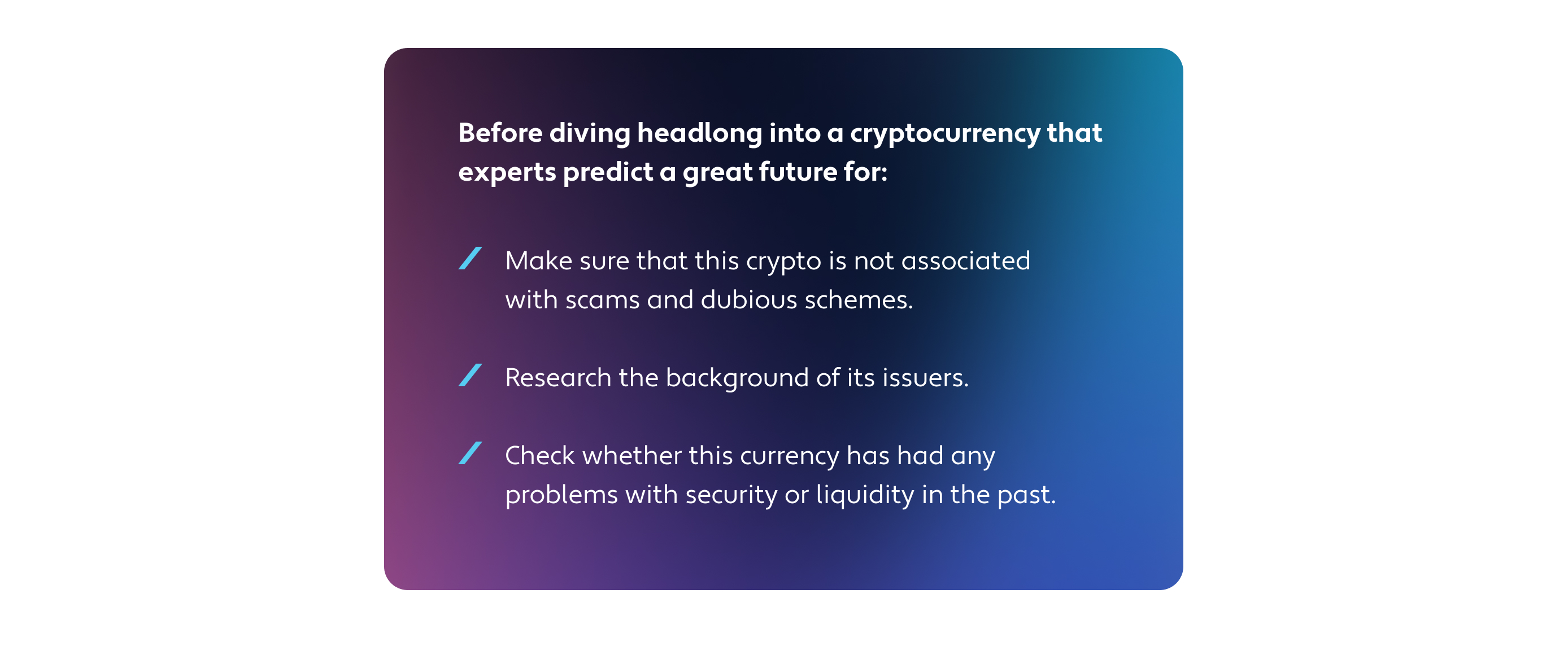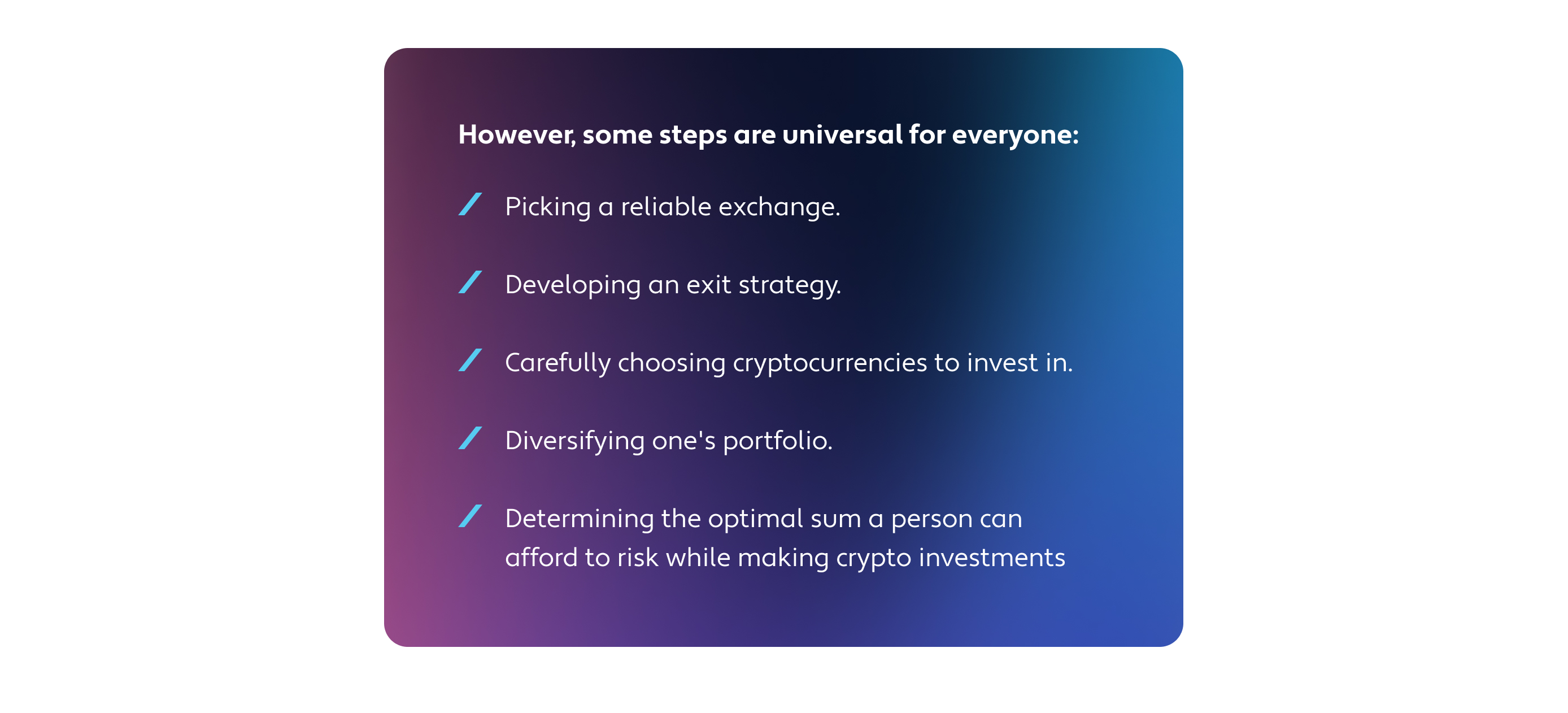5 Steps To minimize Risks in Crypto Trading & Investing


To avoid excessive investment risks associated with crypto or at least minimize their potential adverse impact on your financial well-being, you must always resort to risk management practices.
Here are five crucial steps you should have on your risk management list.
1. Pick a reliable crypto exchange
Some crypto trading and investing risks are related to crypto as an asset in general. Others have a direct connection to specific platforms, crypto wallets, and ecosystems that you choose. Therefore, when entering the crypto world for the first time with zero experience, you should do extensive research to get the full scope of information necessary to make the right choices.
Your first step is choosing an exchange for making your crypto investments. Large and well-established exchanges such as Binance and Coinbase are reputable and time-tested. On the other hand, young and ambitious newcomers such as XBO guarantee a more personalized approach and increased attention to the safety of your funds. Once you've made your choice, do a background check on the exchange for any past scandals or scams it may have been involved in. In the Internet age, such information is always easy to find.
Suppose the conditions of the exchange and its reputation seem suitable for you. In that case, you can start your crypto journey with this platform.
2. Don't risk more than you can afford to lose
This is the golden rule of investing that can be applied to any asset, not only digital currencies. However, in the case of crypto, it is especially important to keep this principle in mind because digital currencies are highly unpredictable. The risk of incurring large losses from erroneous crypto investments is rather high.
The wording of this principle speaks for itself. If you want to invest in crypto, limit yourself to the sum the loss of which will not cripple you financially. You don't need to take loans from the bank just to buy a stock of new coins that you consider highly promising. Instead, allocate a certain volume of funds that you are willing to invest on a regular basis and do not exceed it unnecessarily. Remember that, in the case of crypto, the greater the opportunities, the greater the risks.
3. Explore the risks associated with different cryptos
The number of cryptocurrencies in the world has long been counted in thousands. It is quite logical that various coins are considerably different from each other in countless aspects, including the risks associated with them. There are many factors that can affect the level of investment risks linked to certain coins: geographical restrictions or bans on their circulation, the reliability of the protocols that govern the coins, potential security issues, liquidity, etc.
Therefore, another rule of successful risk management is to research the assets you plan to invest in.

If you understand which asset you are investing in, investment risks associated with it become many times smaller.
4. Don't put all your eggs in one basket
Portfolio diversification is one of the key risk management steps you can take. In this context, it has two main aspects. First, building your entire portfolio on one particular cryptocurrency might be a bad idea. No crypto is 100% reliable, and any coin can plummet if adverse circumstances arise. By dividing your assets between several different cryptocurrencies, you reduce the chance of experiencing large financial losses from unlucky crypto investments.
Secondly, diversifying the portfolio means not only acquiring different coins but also focusing on cryptos with different application fields. Payment cryptocurrencies, stablecoins, metaverse tokens, gaming coins – the choice is wide. The more diverse the spectrum of your cryptos, the less severe consequences you can experience if a certain category of crypto coins falls on hard times.
5. Know when to stop
Timing is one of the most significant factors in crypto investing and trading. It requires a strategic calculation to understand when to start trading a particular cryptocurrency. However, knowing when to stop and close the order to prevent losses is even more critical. Therefore, a well-thought-out exit strategy is a key element of risk management.
To understand when it's time to exit the trading process, you should set the lowest limit you can allow the cryptocurrency's price to reach. If the downward process touches this line, you should close the order. In spot trading, you can automate this process by setting necessary stop orders. Setting such a bottom limit is crucial if you want to manage your risks successfully.
The Takeaway
Risk management is a necessary part of crypto investing and trading. If you plan to approach your crypto experience systematically and competently, you cannot skip this step.
Well-thought-out management of one’s investment risks can include a variety of practices since any experienced trader and investor has their own strategy in this matter.
If you consider all these factors before you buy crypto and get into trading, your chances of minimizing potential risks will rise significantly.
Disclaimer: Our content does not constitute financial advice. It is only intended for informational and educational purposes.








